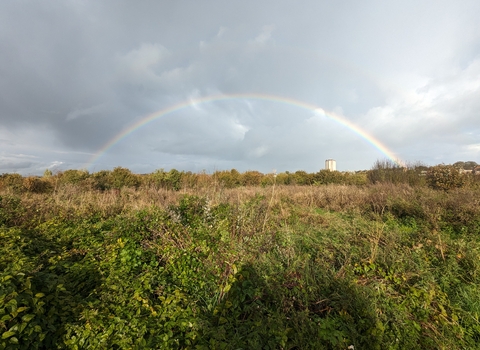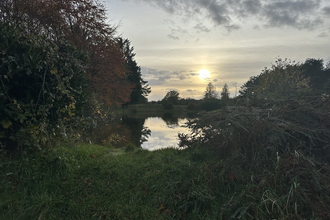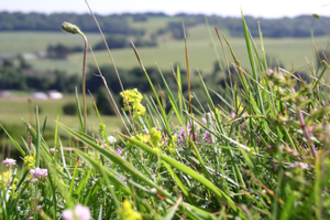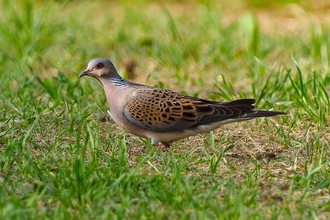Biodiversity Net Gain
Focusing on increasing biodiversity is nothing new for planning applications. The requirement to achieve net gains in biodiversity has been in place for many years. However, the new Environment Bill establishes a legal obligation for all future developments to achieve a minimum of 10% increase in biodiversity compared to pre-development levels, either on-site or in close proximity (with some exceptions).
Proposals for new developments will soon need to legally demonstrate how and where biodiversity has been incorporated, ensuring a 10% net gain above the original baseline levels over a 30 year period. If it is not feasible to achieve the required biodiversity increase on-site, developers have the option to compensate by funding habitat improvements on other land owned by third parties.
BNG opportunities for farmers and landowners
If you own or manage land BNG could give you the opportunity to earn money and support nature in Kent. The Environment Bill allows for land to be provided either on or if not possible then offsite units can be sought. This means you could offer land near to proposed Kent development sites to be used for habitat improvement.
This partnership benefits both you and the developer, while also benefiting the environment. By managing your land for biodiversity net gain, you become a steward for the countryside and create a long-term diversification opportunity with a steady income stream (either a one-off payment from the developer or regular instalments over the 30-year period).
© Guy Edwardes/2020VISION
How do I get started?
Start by arranging a BNG site assessment on your land with a local ecological consultancy such as Adonis Blue. This assessment will identify areas with low biodiversity that can be transformed into habitats. It will determine the current baseline and the number of Biodiversity Units your land can provide, as well as the potential income. Additionally, the assessment will provide information on the types of habitats you can create and the species you can support.
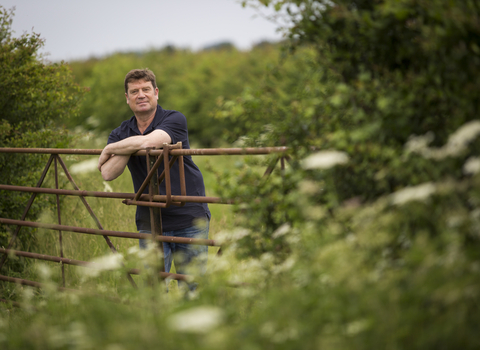
© Simon Rawles
Our Biodiversity Net Gain services for farmers and landowners
Kent Wildlife Trust and our environmental consultancy, Adonis Blue, can help you make the most of your land, drive climate resilience and restore land as part of the local nature recovery strategy. We can assist you throughout the entire BNG process and provide various services such as site assessments, assistance in finding developers to purchase your BNG Units, delivering habitat restoration, managing ongoing restoration, and monitoring progress. We prioritise sites and projects that align with local biodiversity priorities and strategies and help connect existing habitats.
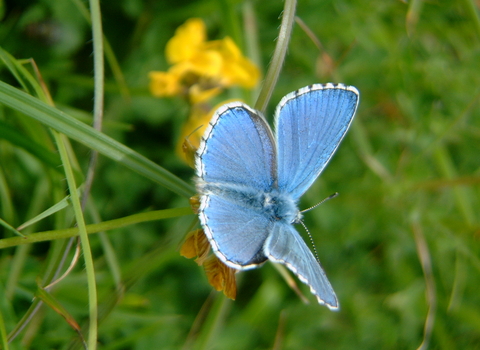
Who are Adonis Blue Environmental Consultants?
Our environmental consultancy, Adonis Blue, are part of the Kent Wildlife Trust Group and provide a range of ecological, environmental and high integrity BNG services ensuring profits are invested back in nature conservation through the trust.
They have joined forces with BTF Partnership to offer a full suite of BNG offset solutions for developers, landowners, and local planning authorities in Kent and neighbouring counties. Bringing together BTF’s 30+ years’ experience as the South East’s top land agent with our own extensive track record delivering biodiversity uplift across Kent, we offer a full package of services to support clients through every step of the BNG process.
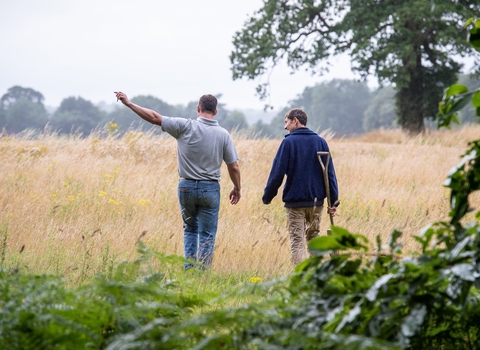
Matthew Roberts
Our BNG services for farmers, landowners and managers
Our biodiversity net gain services alongside Adonis Blue Environmental Consultants include (but are not limited to):
- Conducting fully costed land evaluations to assess income potential for BNG and other nature-based solutions.
- Developing detailed 30-year management and monitoring plans and supporting their implementation.
- Advertising your BNG units on our BNG portal.
- Securing investment funding and mediating contract agreements with suitable developers.
Frequently asked questions for farmers and landowners
How is Biodiversity Net Gain calculated?
The level of biodiversity on development sites will be determined through baseline assessments, using Defra's biodiversity metric, to evaluate the existing biodiversity. Defra's Metric considers four key factors when assessing biodiversity levels: the uniqueness of the habitat(s), the condition of the habitat(s), the strategic importance, and the connectivity of habitats.
Our exclusive carbon+habitat tool has been especially designed to bring multiple measurement metrics together to help calculate the best possible income potential for your land.
How much can I earn from BNG unit sales?
The amount of money landowners can earn depends on how their land measures up to the DEFRA metric. On average, they can make £20,000 - £30,000 per Biodiversity Unit (also called a 'BNG Unit'). A Biodiversity Unit represents a habitat area and is determined by considering the habitat's size, quality, and location. According to Natural England, the off-site BNG market is projected to be valued at £135m - £274m per year.
How long will my land need to deliver Biodiversity Net gain for?
Land used for BNG must be maintained for nature for at least 30 years and of course deliver the required uplift in biodiversity net gain. This duration is crucial for the establishment of a natural habitat and the recovery of species. Although it may appear to tie up land for a considerable period from a landowner's perspective, it offers the advantage of a stable and predictable income over time. This makes it a particularly viable choice for land that is not highly valuable or productive.
Is Biodiversity Net Gain 'stackable' with other environmental schemes?
In some cases, land that is already part of other environmental schemes can also be used for BNG. According to government guidelines, you can sell BNG units and nutrient credits from the same land by stacking them. You can also offer BNG units and carbon credits on different sections of the same site, as long as it doesn't affect the carbon value and you enhance the habitat more. You can sell these units and credits to the same or different developers, as long as you meet the eligibility criteria for each market.
After achieving your planned habitat condition, you may be able to sell more biodiversity units or nutrient credits. This is possible if you can make further enhancements. However, you cannot sell an enhancement funded by an agri-environment scheme as a biodiversity unit or nutrient credit. But you can use the same land to create additional habitat enhancements on top of an existing agri-environment agreement.
Sounds great, anything else I need to think about?
Before deciding to offer your land as BNG units you'll need to decide if this is the right move for you and your business. Are you keen on contributing towards habitat improvements to support environmental aims, can you commit to this improvement over a 30 year period, what help would you need to deliver the gains required. Also think about the tax implications on your business in the event of removing agricultural land and compare this with the income expected from biodiversity net gain unit sales.
